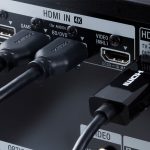HDMI cables: we’ve all seen them in a tangle behind our TVs and game consoles. They’re essential for connecting our devices and enjoying high-definition content. But does the type or brand of HDMI cable you use actually make a difference? Are those expensive “premium” cables worth the investment? Let’s untangle the truth and explore the factors that truly matter when selecting an HDMI cable.
Contents
- 1 HDMI Basics: Understanding the Essentials
- 2 The Myth of “Premium” HDMI Cables
- 3 When HDMI Cables Do Matter
- 4 How to Choose the Right HDMI Cable
- 5 HDMI Cable Care and Maintenance
- 6 Debunking HDMI Cable Myths
- 7 Understanding HDMI Cable Certification
- 8 When to Upgrade Your HDMI Cable
- 9 HDMI Alternatives: Are They Worth Considering?
- 10 DIY HDMI Cables: Is It Worth It?
- 11 The Future of HDMI Cables
- 12 HDMI Cables and Gaming: What Gamers Need to Know
- 13 Conclusion:
HDMI Basics: Understanding the Essentials
Before we dive into the nuances, let’s cover the fundamentals:
- What is HDMI? HDMI stands for High-Definition Multimedia Interface. It’s a standard for transmitting high-quality audio and video signals between devices.
- HDMI Versions: There are various HDMI versions (1.4, 2.0, 2.1), each with different capabilities in terms of resolution, refresh rate, and bandwidth.
- Cable Types: HDMI cables come in various types (Standard, High Speed, Ultra High Speed) with different capabilities to support specific resolutions and features.
The Myth of “Premium” HDMI Cables
You’ve likely seen expensive HDMI cables claiming to offer superior picture and sound quality. However, the truth is that for most users, a basic HDMI cable will perform just as well as an expensive one.
Digital vs. Analog
HDMI transmits digital signals, which are either 1s or 0s. This means the signal either arrives perfectly or not at all. There’s no gradual degradation in quality like with analog signals.
Marketing Hype
Manufacturers often use misleading terms like “oxygen-free copper” or “gold-plated connectors” to justify higher prices. These features have minimal impact on signal quality for typical home setups.
When HDMI Cables Do Matter
While most HDMI cables will get the job done, there are situations where the choice of cable can make a difference:
- Long Cable Runs: If you need a cable longer than 15 feet, investing in a high-quality cable can help ensure signal integrity and prevent signal loss.
- High Bandwidth Requirements: For 4K HDR content at high refresh rates (120Hz or higher) or 8K content, an Ultra High Speed HDMI cable (HDMI 2.1) is necessary to support the increased bandwidth demands.
- Future-Proofing: If you plan to upgrade to newer devices in the future, investing in a high-quality HDMI 2.1 cable can ensure compatibility and prevent the need for frequent upgrades.

How to Choose the Right HDMI Cable
Consider these factors when selecting an HDMI cable:
- Version: Choose a cable that matches the HDMI version of your devices. For most users, HDMI 2.0 is sufficient for 4K content at 60Hz.
- Cable Type: Select a cable type (Standard, High Speed, Ultra High Speed) that supports your desired resolution and features.
- Length: Choose the shortest cable length possible to maintain signal quality. If you need a longer cable, opt for a high-quality one.
- Price: Don’t overspend on “premium” cables unless you have specific needs like long cable runs or high bandwidth requirements.
HDMI Cable Care and Maintenance
Proper care can extend the lifespan of your HDMI cable:
- Avoid Bending: Don’t bend the cable too sharply, as this can damage the internal wires.
- Protect from Damage: Avoid stepping on the cable or placing heavy objects on it.
- Clean Connectors: Dust and debris can interfere with the signal. Clean the connectors with a soft cloth and rubbing alcohol.
In most cases, the brand or price of your HDMI cable won’t significantly impact your viewing experience. However, for specific needs like long cable runs or high-end setups, investing in a high-quality cable can be worthwhile. By understanding the basics of HDMI and considering your specific requirements, you can choose the right cable without breaking the bank.
Debunking HDMI Cable Myths
Let’s address some common misconceptions about HDMI cables:
- Gold-Plated Connectors: While they may look fancy, gold plating doesn’t necessarily improve signal quality. It primarily protects against corrosion, which is only a concern in harsh environments.
- Oxygen-Free Copper: Oxygen-free copper is often touted as a premium feature, but its impact on signal transmission over short distances is negligible.
- Directionality: HDMI cables don’t have a specific direction. You can plug them in either way.
- Break-In Period: There’s no need to “break in” an HDMI cable. It will perform optimally right out of the box.
Understanding HDMI Cable Certification
To ensure quality and compatibility, look for HDMI cables certified by the HDMI Licensing Administrator:
- Standard HDMI Cable: Suitable for 1080i or 720p resolutions.
- High Speed HDMI Cable: Supports higher resolutions like 1080p, 4K, and 3D, as well as Deep Color and wider color gamuts.
- Ultra High Speed HDMI Cable (HDMI 2.1): Required for 8K resolutions, 4K at 120Hz, and advanced features like Dynamic HDR and eARC.

When to Upgrade Your HDMI Cable
If you’re experiencing any of these issues, it might be time to upgrade your HDMI cable:
- Flickering or Snow: This could indicate signal loss or interference, especially with longer cables.
- Audio Dropouts: If the audio cuts out intermittently, it might be due to a faulty or inadequate cable.
- Unsupported Features: If you’re upgrading to a new device with features like 8K resolution or 4K at 120Hz, you’ll need a compatible Ultra High Speed HDMI cable.
HDMI Alternatives: Are They Worth Considering?
While HDMI is the most common standard, there are alternatives worth considering:
- DisplayPort: Often found on computers and monitors, DisplayPort can support higher resolutions and refresh rates than HDMI.
- USB-C: With the right adapter or cable, USB-C ports can transmit video and audio signals, making them a versatile option for newer devices.
DIY HDMI Cables: Is It Worth It?
While it’s technically possible to make your own HDMI cable, it’s not recommended for most users. It requires specialized tools, knowledge of electronics, and careful assembly to ensure proper signal transmission and safety. It’s generally more convenient and reliable to purchase a pre-made cable from a reputable manufacturer.
The Future of HDMI Cables
HDMI technology continues to evolve, with new versions and features on the horizon. Here’s what we can expect in the future:
- Higher Resolutions and Refresh Rates: HDMI is expected to support even higher resolutions (beyond 8K) and refresh rates (up to 240Hz) in the future.
- Enhanced Features: We can anticipate new features like improved HDR formats, object-based audio, and even more immersive gaming experiences.

HDMI Cables and Gaming: What Gamers Need to Know
For gamers, the choice of HDMI cable can be crucial for maximizing their experience:
- H3: Refresh Rates: Higher refresh rates (120Hz, 144Hz, or even 240Hz) offer smoother gameplay and reduced motion blur. To achieve these refresh rates at 4K resolution, an Ultra High Speed HDMI cable (HDMI 2.1) is essential.
- H3: VRR (Variable Refresh Rate): This technology synchronizes the refresh rate of your TV or monitor with the frame rate of your game console, eliminating screen tearing and stuttering. HDMI 2.1 supports VRR.
- H3: ALLM (Auto Low Latency Mode): This feature automatically switches your TV or monitor to a low-latency mode when you start playing a game, minimizing input lag.
Conclusion:
Choosing the right HDMI cable doesn’t have to be complicated. While “premium” cables may not offer significant benefits for most users, understanding your specific needs and opting for a certified cable can ensure optimal performance and future-proofing. Remember, the most important factor is to choose a cable that supports your devices’ capabilities and your desired viewing experience. By making an informed decision, you can enjoy your favorite content without any worries about signal loss or compatibility issues.


